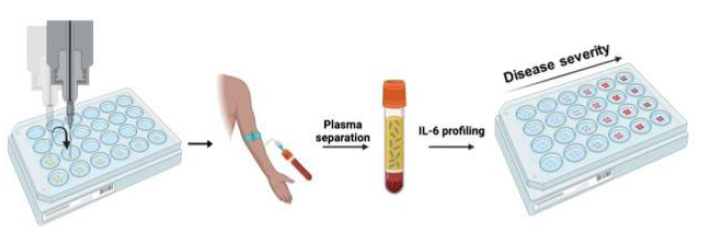3D Hydrogel Microarrays with Ultra-High Detection Specificity and Sensitivity

Tech ID
25-011
Inventors
Tohid Didar
Zeinab Hosseinidoust
Amid Shakeri
Lubna Najm
Patent Status
US Provisional Patent Application Filed
Stage of Research
Proof of principle data available
Contact
Amy Hector
Business Development Manager
Abstract
Immunofluorescence assays are crucial in the diagnosis of complex diseases via disease-associated biomarker detection. Unfortunately, most assays rely on two-dimensional microarrays that suffer from low repeatability and sensitivity, challenging their ability to monitor clinical disease progression. While there are three-dimensional microarrays with enhanced biorecognition capabilities, their component materials are not compatible with current microarray fabrication protocols.
Researchers at McMaster University have developed a platform for bioprinting three-dimensional microarrays that have ultra-high detection specificity and sensitivity and can be adopted for a wide range of diseases of interest, biosensor types, and biorecognition elements [1]. These immunosorbent hydrogels have been comprehensively optimized and assessed for enhanced diagnosis of bacterial-induced infection and sepsis. Given their ease of implementation, high-throughput fabrication, and ultrasensitive detection, these three-dimensional microarrays will enable better clinical monitoring of disease progression, yielding improved patient outcomes.
Applications
- Highly sensitive and specific detection of biomarkers in biological samples for diagnosis of a wide range of diseases
- Validated for diagnosis of bacterial infections and sepsis
- Portable point-of-care devices
Advantages
- High throughput fabrication of three-dimensional microarrays
- Leverages industry-standard inkjet printing techniques
- Can be easily adopted for diverse range of biomarkers of interest, diseases of interest, biosensor types (e.g. optical, colorimetric, electrical) and/or biorecognition elements (e.g. CAbs, aptamers, aptamer-conjugated nanoparticles)
• Simultaneous detection of multiple markers for more comprehensive information on the state of disease
References
- Shakeri et al. Noncontact 3D Bioprinting of Proteinaceous Microarrays for Highly Sensitive Immunofluorescence Detection within Clinical Samples. ACS Nano Article ASAP.DOI: 10.1021/acsnano.4c12460

